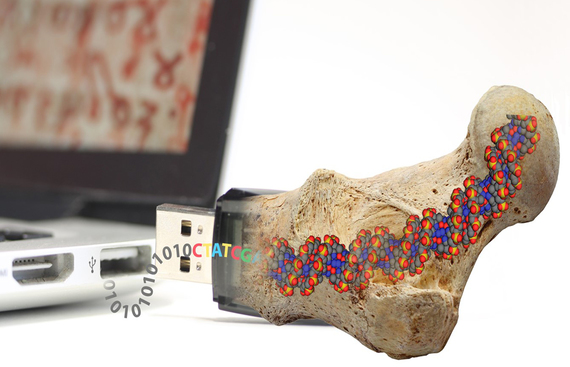DNA is the Future of Data Storage

For ages now, data storage has been a crucial task in our day to day life consequently, data storage has evolved a long way from punch cards to cloud storage and more. The sudden surge in internet usage has indeed contributed to the excessive data creation and storage is certainly vital. The IT major Domo has revealed that for every minute Google gets about 3.88 million searches, close to 159,362,760 email are sent, 4.33 million videos are watched on YouTube, 473,000 tweets and 49,000 pics are posted on Insta as of 2018. However, it was predicted that about 1.7 megabytes of data would be created per second by an individual in 2021, which would turn to be 418 zettabytes within a year. This pace of data creation had certainly been a threat for data storage, as the magnetic or optical data storage system could not last over 100 years.
Thus, running data centres utilizes massive energy resulting in a critical data-storage problem over a few years. This is when the new medium has come to our rescue, DNA-based data storage has stepped in to take the place of hard drives. As the name indicates DNA data storage has long chains of nucleotides namely A, T, C and G and turns to be life’s information-storage material. In the DNA data storage, the information could be stored in the above mentioned alphabetic sequence in order to simplify the read, reform and copy process. It is evident that the DNA has a complete genome sequencing of a fossil horse that existed about 500,000 years ago. Thus, storing would consume minimal energy.
Benefits of Using DNA
The main advantages that of using DNA storage is incredible information density. As the body usually stores so much genetic information into the content of a small cell--that means you can store a lot of information in a very small volume. That's termed as information density. Using DNA's information storage, one could put the information in that medium once, and then would be able to retain it around forever. Also, the data could be stored in a test tube at room temperature, and it is said to be a very stable form of information storage.
Error Fixing
DNA structure and sequencing technologies were not devised for writing and reading digital data. A lot of power is spent on creating perfect DNA. But we might be able to resolve error-ridden sequences only by employing good software. When we’re creating DNA, we are indeed developing millions and millions of the same molecules simultaneously. Generally, data scientists apply algorithms to encode redundancy in digital media storage devices such as DVD’s such redundancy could be used to rectify errors.
Other Hurdles
When DNA is synthesized, it’s actually lettered onto silicon chips, and these chips are expensive. The unexpected thing is pushing the limits on DNA's storage limit, however, that is pricey as well. Another notable cost includes in the writing-storage-reading workflow is labour. Everything within DNA synthesis and sequencing, such as preparing sequencing libraries, is still handwritten. Liquid handling robots could aid.
Early Adopters
While increased investments are needed to make DNA-based data storage practical at scale, Lee predicts people will start using the technology within the next two to three years. If the technology isn’t siloed, then there could be chances of biohackers to help build additional application.
Novelties to Expect
Biologically storing digital data is a very simple idea. When you start to imagine technology's role that might be used in the real world, it gets a lot more complicated. Like for example, when retrieving data that is stored in DNA, one could probably may not prefer to have to sequence an entire library. We require to develop the DNA equivalent of a digital search function. However, at present, the focus has been set on the cold data that information that doesn’t require to be reached quite often. Ironically, digital storage is also relatively fresh, yet things aren’t considered archived until they’re digitized, so the technology may move quicker than we expect.
Explaining biological storage being ideal, Dr Emily M. Leproust, Ph.D CEO and co-founder of Twist Biosciences says, “DNA is an incredible molecule that, by its very nature, provides ultra-high-density storage for thousands of years. In fact, the DNA contained within all cells in a human body could store all the movies created to date in the 21st century three billion times over. That, indeed, illustrates the magic of bringing biology and technology together to create synthetic (inert) DNA.”
